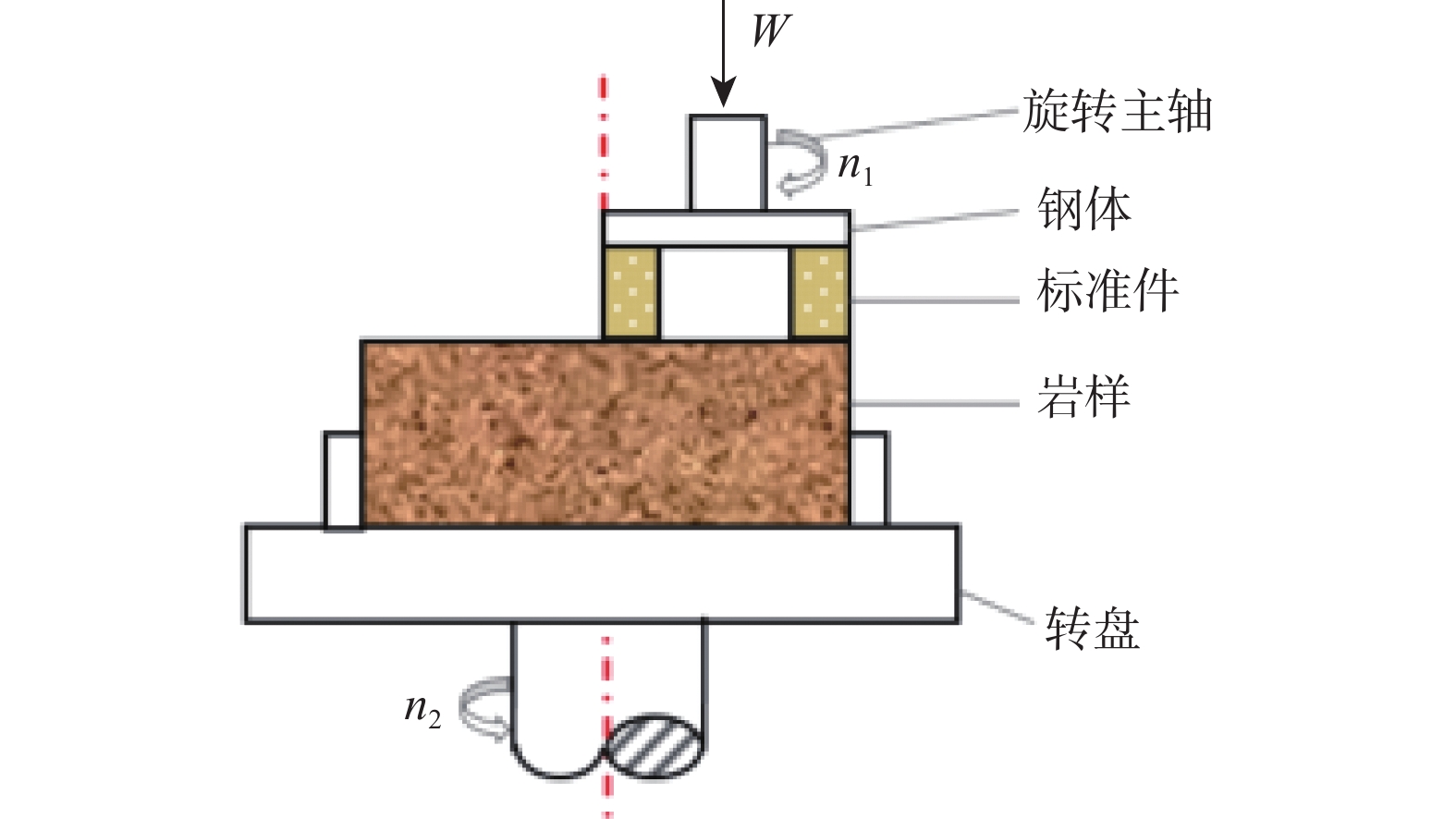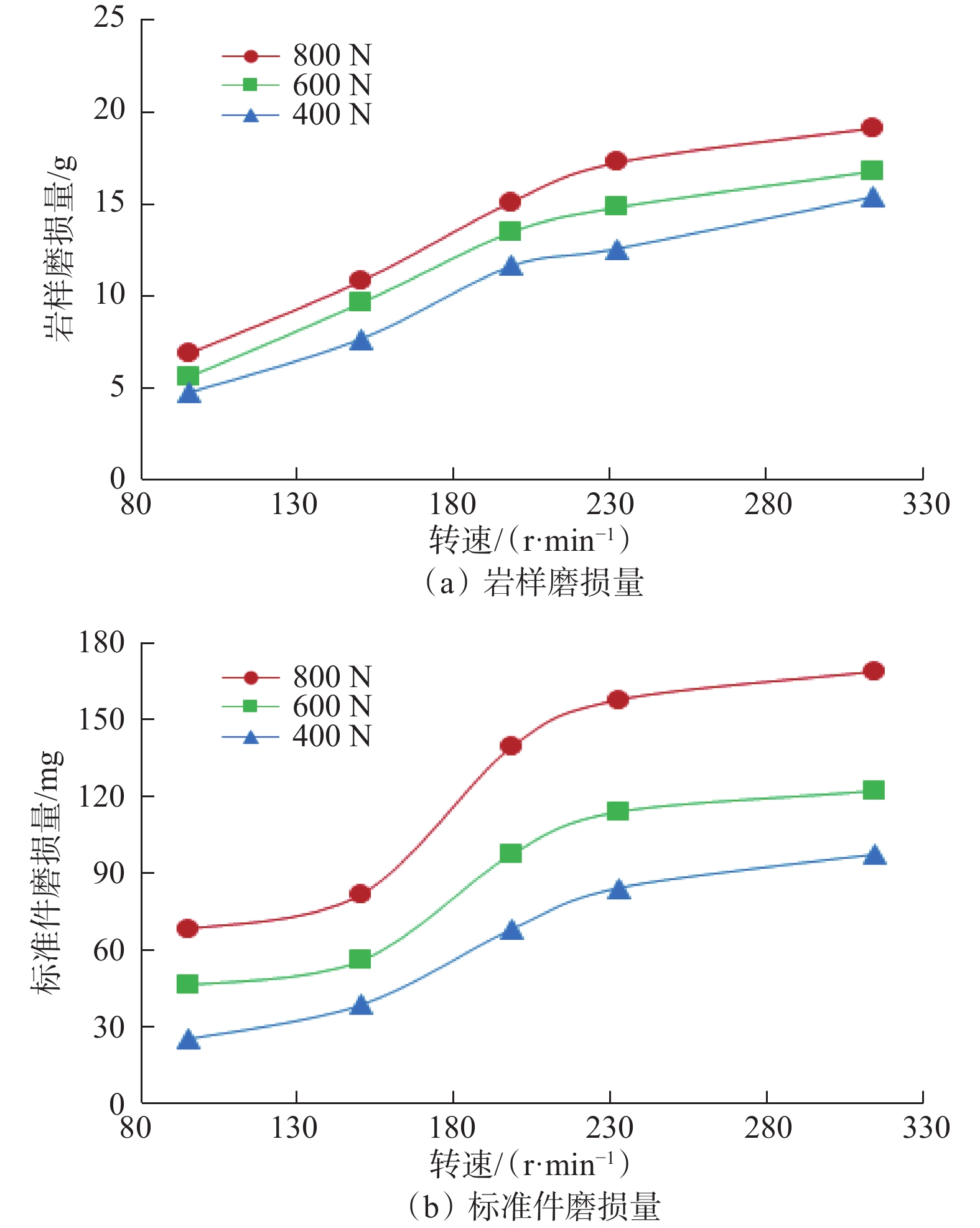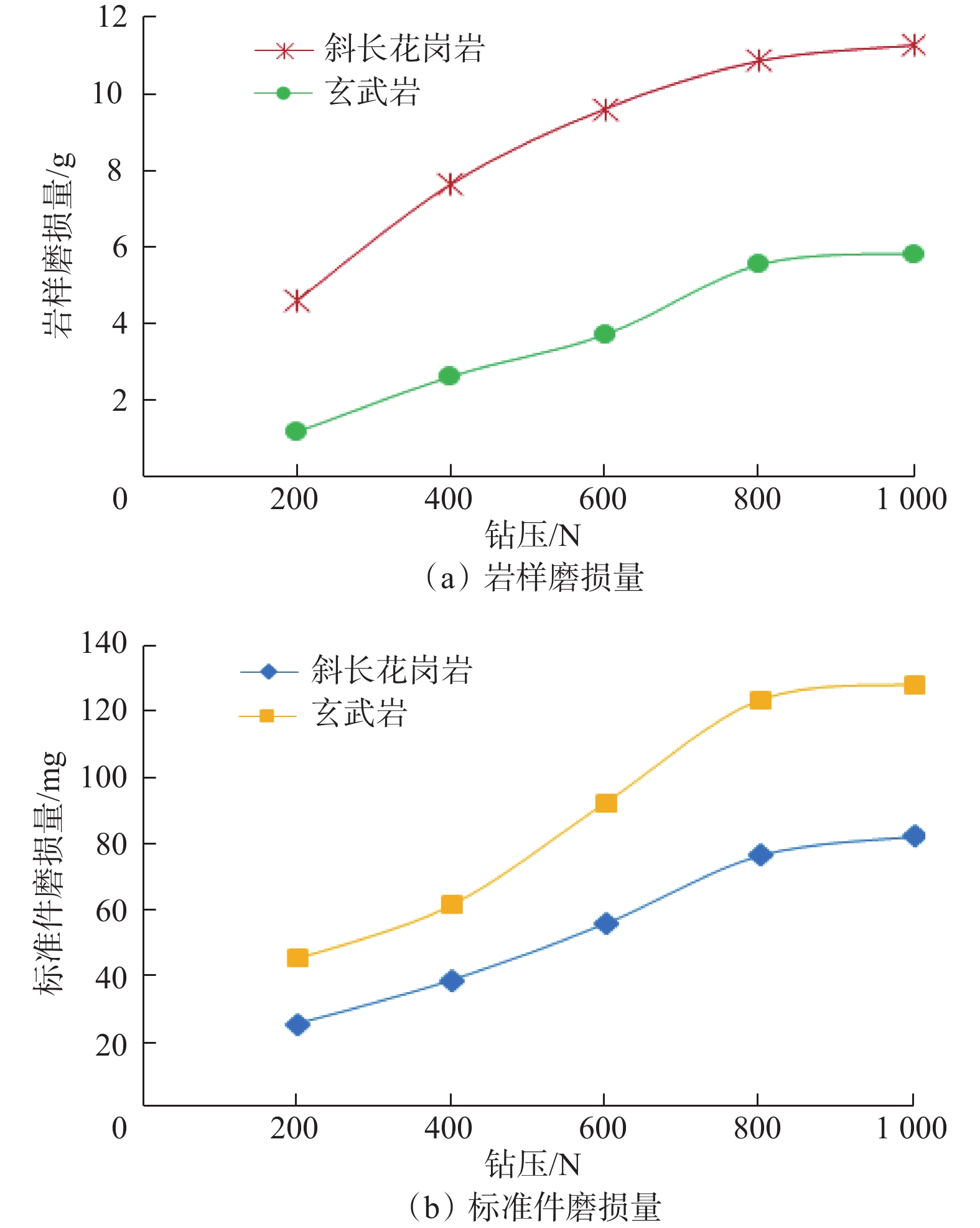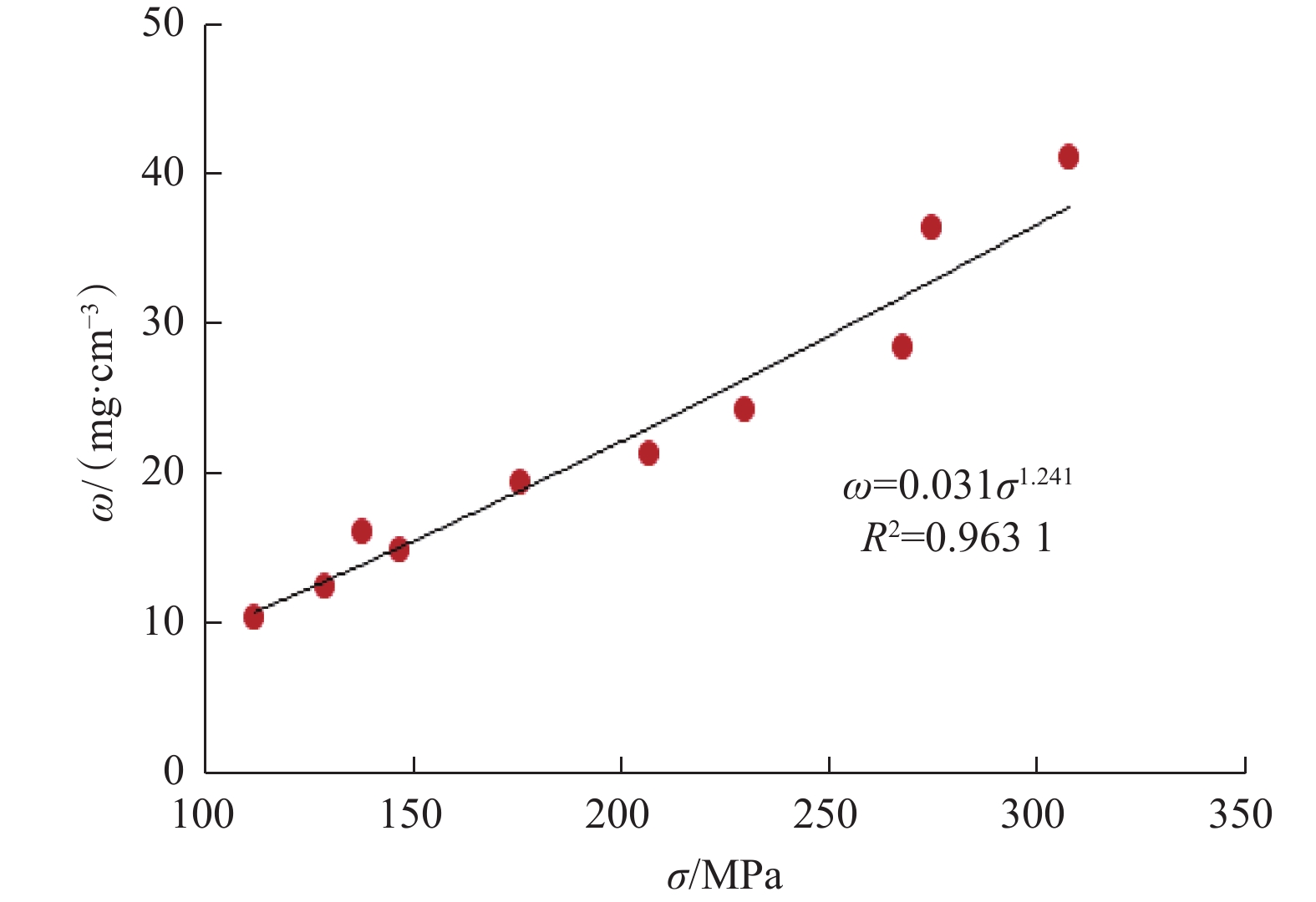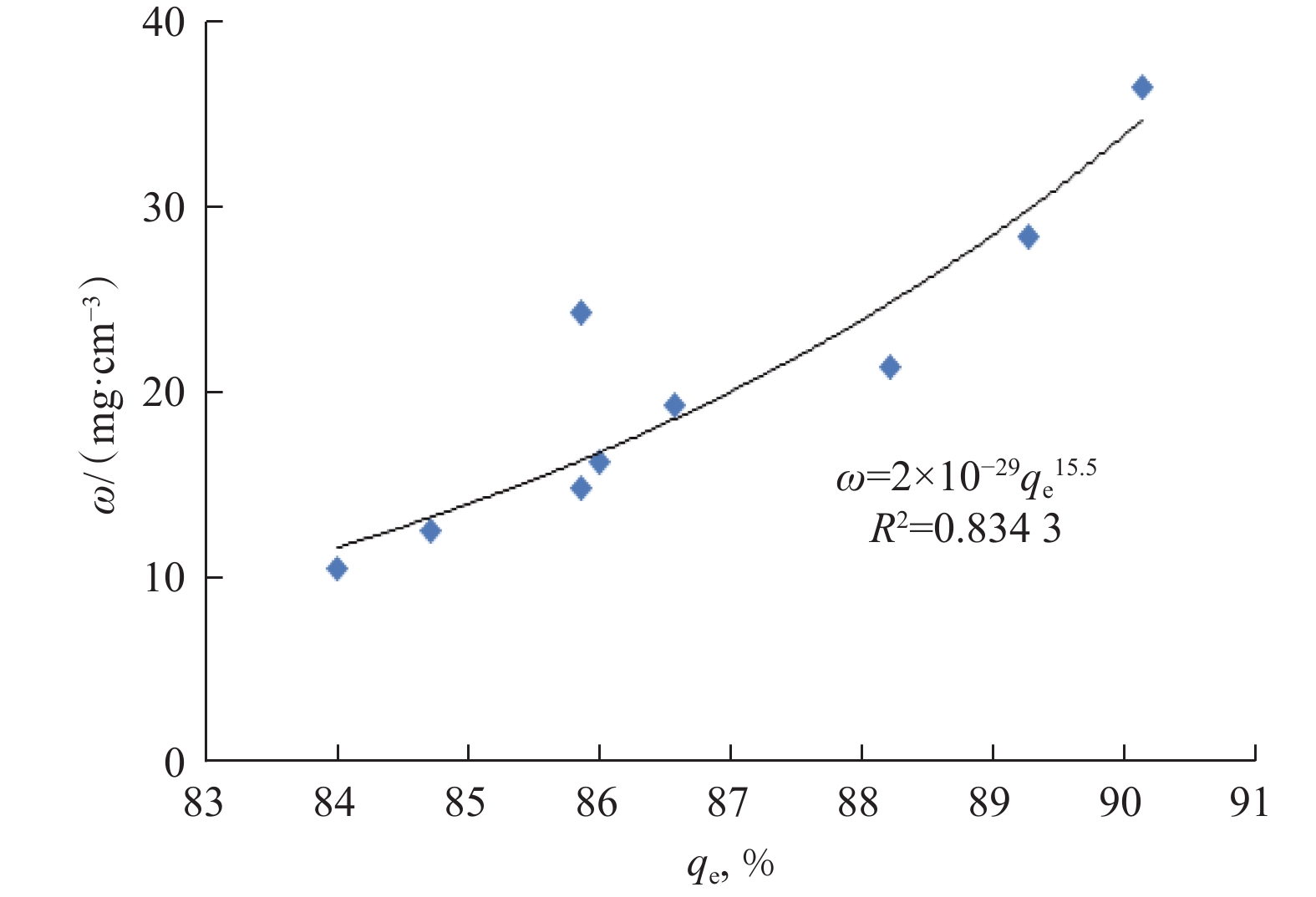Experimental Study on Igneous Rock Abrasiveness
-
摘要:
火成岩钻井设计优化的关键是了解火成岩的可钻性和研磨性,但至今还未形成一套测试火成岩研磨性的有效方法。为此,采用自主研发的岩石研磨性测定装置,测试了不同岩性火成岩岩样的研磨性,并分析了火成岩研磨性与其单轴抗压强度和矿物成分含量之间的关系。测试结果表明,在岩样转速8 r/min、钻压800 N、钻头转速198 r/min的条件下,以破碎单位体积岩石研磨标准件的磨损质量作为研磨性指标,可以很好地分辨不同岩性火成岩的研磨性,且火成岩的研磨性与其单轴抗压强度和等效石英含量均呈较好的幂函数关系。研究结果表明,以火成岩单轴抗压强度为基础建立的火成岩研磨性预测模型,可以很好地预测火成岩的研磨性,可为优化火成岩钻井设计提供理论依据。
Abstract:Igneous oil and gas reservoirs are hot spots in well drilling. But, drilling them is extremely difficult due to the highly abrasive nature of the rocks. So, drillability and abrasiveness of igneous rocks must form the basis of drilling optimizition design. The problem is, however, that igneous rock abrasiveness testing methods have not yet been formulated. So, in this paper, we describe the development of a rock abrasiveness measuring device used to test the abrasiveness of igneous rock samples with different lithologies. We also examined the relationship between the abrasiveness and their uniaxial compressive strength of igneous rocks, and mineral content. We found that under the conditions of rock sample rotary speed of 8 r/min, WOB of 800 N, and drill bit rotary speed of 198 r/min, the weight loss of grinding standard part of per unit volume broken rock within a certain time can be used as abrasiveness index to distinguish the abrasiveness of igneous rocks with different lithologies. The abrasiveness of igneous rocks shows a good power function relationship between uniaxial compressive strength and equivalent quartz content. The research results show that the abrasiveness prediction model based on the uniaxial compressive strength of igneous rock can predict the igneous rock abrasiveness very well and provide a theoretical basis for optimizing the drilling design for wells in igneous reservoirs.
-
Keywords:
- igneous rock /
- abrasiveness /
- grinding standard part /
- compressive strength /
- prediction model
-
-
表 1 火成岩岩样矿物成分及含量和单轴抗压强度测试结果
Table 1 Test results of mineral composition & content and uniaxial compressive strength of igneous rock samples
岩性 矿物各成分含量,% qe,% σ/MPa 石英 钾长石 斜长石 闪石 辉石 斜长花岗岩 12 25 59 – – 84.00 112 花岗斑岩 17 50 29 – – 84.71 129 石英正长岩 19 51 27 – – 85.86 147 石英二长岩 18 38 41 – – 86.00 138 花岗二长岩 24 36 37 – – 86.57 176 英安岩 36 9 40 11 – 88.21 207 花岗正长岩 31 44 20 – – 85.86 230 角闪辉长岩 18 22 36 10 13 89.27 268 花岗闪长岩 35 9 54 3 – 90.13 275 玄武岩 – 17 55 5 19 – 308 表 2 火成岩研磨性指标与单轴抗压强度关系回归结果
Table 2 Regression results of relationship between compressive strength and abrasiveness of igneous rocks
函数关系 模型 R2 F 线性 ω=0.144σ–6.028 0.944 3 135.504 1 对数 ω=27.244lnσ–120.17 0.901 4 70.133 6 指数 ω=5.78e0.006 4σ 0.961 4 199.476 8 幂 ω=0.031σ1.241 0.963 1 208.851 6 多项式 ω=0.000 4σ2–0.025 5σ+9.712 0.962 9 91.030 9 表 3 火成岩研磨性指标与等效石英含量关系回归结果
Table 3 Regression results of relationship between equivalent quartz content and abrasiveness of igneous rocks
函数关系 模型 R2 F 线性 ω=3.680qe–298.74 0.830 4 34.262 3 对数 ω=320.26lnqe–1 408.7 0.828 5 33.813 3 指数 ω=4×10–6e0.187qe 0.832 7 34.845 0 幂 ω=2×10–29qe15.5 0.834 3 35.234 0 多项式 ω=0.02qe2–138.617 0.832 1 34.690 8 表 4 回归关系式比较
Table 4 Comparison of regression relations
引入参数 关系式 R2 F σ 式(3) 0.963 1 208.851 6 qe 式(4) 0.834 3 35.234 0 qe,σ 式(6) 0.962 7 77.357 9 表 5 研磨性指标预测结果
Table 5 Abrasiveness prediction results of igneous rocks with different lithologies
岩性 单轴抗压
强度/MPa研磨性指标/(mg∙cm–3) 相对误差,% 预测 实测 正长花岗岩 151 15.63 15.24 2.52 斜长花岗岩 118 11.51 11.95 3.80 粉红花岗岩 273 32.60 30.06 7.80 二长花岗岩 197 21.75 23.17 6.55 二长花岗岩 169 17.98 17.45 2.94 -
[1] 王洛,李江海,师永民,等. 全球火山岩油气藏研究的历程与展望[J]. 中国地质, 2015(5): 1610–1620. doi: 10.3969/j.issn.1000-3657.2015.05.028 WANG Luo, LI Jianghai, SHI Yongmin, et al. Review and prospect of global volcanic reservoirs[J]. Geology in China, 2015(5): 1610–1620. doi: 10.3969/j.issn.1000-3657.2015.05.028
[2] 姜洪福,师永民,张玉广,等. 全球火山岩油气资源前景分析[J]. 资源与产业, 2009, 11(3): 20–22. doi: 10.3969/j.issn.1673-2464.2009.03.006 JIANG Hongfu, SHI Yongmin, ZHANG Yuguang, et al. Potential of global volcanics-hosted oil-gas resoruces[J]. Resources & Industries, 2009, 11(3): 20–22. doi: 10.3969/j.issn.1673-2464.2009.03.006
[3] 付茜. 中国火成岩油气勘探开发现状及展望[J]. 石油钻采工艺, 2017, 39(1): 25–32. FU Qian. Status and prospect of igneous oil and gas exploration and development in China[J]. Oil Drilling & Production Technology, 2017, 39(1): 25–32.
[4] 赵洪山,冯光通,唐波,等. 准噶尔盆地火成岩钻井提速难点与技术对策[J]. 石油机械, 2013, 41(3): 21–26. doi: 10.3969/j.issn.1001-4578.2013.03.005 ZHAO Hongshan, FENG Guangtong, TANG Bo, et al. Difficulties in igneous rock drilling in Dzungaria Basin and technological solutions[J]. China Petroleum Machinery, 2013, 41(3): 21–26. doi: 10.3969/j.issn.1001-4578.2013.03.005
[5] 巢贵业. 松南地区火山岩水平井优快钻井技术[J]. 石油钻探技术, 2013, 41(6): 62–67. doi: 10.3969/j.issn.1001-0890.2013.06.012 CHAO Guiye. Ultra-fast drilling technology for horizontal wells in volcanic rocks in Songnan Area[J]. Petroleum Drilling Techniques, 2013, 41(6): 62–67. doi: 10.3969/j.issn.1001-0890.2013.06.012
[6] 杨明合,夏宏南,蒋宏伟,等. 火山岩地层优快钻井技术[J]. 石油钻探技术, 2009, 37(6): 44–47. doi: 10.3969/j.issn.1001-0890.2009.06.010 YANG Minghe, XIA Hongnan, JIANG Hongwei, et al. Optimal and fast drilling technology for volcanic rock formations[J]. Petroleum Drilling Techniques, 2009, 37(6): 44–47. doi: 10.3969/j.issn.1001-0890.2009.06.010
[7] 冯月江. 火成岩油藏钻井完井技术探讨[J]. 石油钻探技术, 1998, 26(4): 40–41. FENG Yuejiang. Discussion on drilling and completion technology of igneous reservoir[J]. Petroleum Drilling Techniques, 1998, 26(4): 40–41.
[8] 马凤清. 哈山3井火成岩地层快速钻井技术[J]. 石油钻探技术, 2014, 42(2): 112–116. MA Fengqing. Rapid drilling technology of igneous formations in Well Hashan 3[J]. Petroleum Drilling Techniques, 2014, 42(2): 112–116.
[9] 王滨,李军,邹德永,等. 强研磨性硬岩PDC 钻头磨损机理及磨损分布规律研究[J]. 特种油气藏, 2018, 25(4): 149–153. WANG Bin, LI Jun, ZOU Deyong, et al. Mechanisms and distribution pattern of abrasions on PDC bits for highly-abrasive hard-rock[J]. Special Oil & Gas Reservoirs, 2018, 25(4): 149–153.
[10] 邹德永,王瑞和. PDC钻头的岩石研磨性试验研究[J]. 石油大学学报(自然科学版), 2003, 27(2): 41–43. ZOU Deyong, WANG Ruihe. Experimental study on rock abrasiveness with PDC bit[J]. Journal of the University of Petroleum, China(Edition of Natural Science), 2003, 27(2): 41–43.
[11] DAHL F, BRULAND A, JAKOBSEN P D, et al. Classifications of properties influencing the drillability of rocks, based on the NTNU/SINTEF test method[J]. Tunnelling and Underground Space Technology, 2012, 28: 150–158. doi: 10.1016/j.tust.2011.10.006
[12] 孔健. 人造金刚石钻进中岩石研磨性的试验研究[J]. 地球科学, 1985, 10(3): 53–63. KONG Jian. Experimental study on the abrasiveness of rock in synthetic diamond drilling[J]. Earth Science, 1985, 10(3): 53–63.
[13] 袁军,邹德永,钟洪娇,等. 适合于石油钻井地层岩石研磨性测定的标准磨损件研制[J]. 中国科技论文, 2016, 11(11): 1249–1253. doi: 10.3969/j.issn.2095-2783.2016.11.011 YUAN Jun, ZOU Deyong, ZHONG Hongjiao, et al. Development of standard wear specimen for determination of rock abrasiveness in petroleum drilling formation[J]. China Sciencepaper, 2016, 11(11): 1249–1253. doi: 10.3969/j.issn.2095-2783.2016.11.011
[14] 赵靖影,邓金根,谢玉洪,等. 通用地层研磨性预测模型的建立及应用[J]. 中国海上油气, 2011, 23(5): 329–334. doi: 10.3969/j.issn.1673-1506.2011.05.011 ZHAO Jingying, DENG Jingen, XIE Yuhong, et al. Establishment and application of a universal prediction model of formation abrasivity[J]. China Offshore Oil and Gas, 2011, 23(5): 329–334. doi: 10.3969/j.issn.1673-1506.2011.05.011
[15] 邢晨. 火成岩研磨性测定方法及预测模型研究[D]. 青岛: 中国石油大学(华东), 2017. XING Chen. Study on the determination method and prediction model of igneous rock abrasiveness[D]. Qingdao: China University of Petroleum(East China), 2017.
-
期刊类型引用(16)
1. 熊冬,贺甲元,马新仿,曲兆亮,郭天魁,马诗语. 深部煤及顶底板不同射孔位置条件下的压裂模拟——以鄂尔多斯盆地某气田8号深部煤层为例. 煤炭学报. 2024(12): 4897-4914 .  百度学术
百度学术
2. 景东阳,李治平,韩瑞刚. 致密储层水力压裂裂缝几何形态地质影响因素及控制方法. 科学技术与工程. 2022(21): 9129-9136 .  百度学术
百度学术
3. 王明星,纪大刚,袁峰,王健,马新仿,邹雨时,张兆鹏. 多岩性储集层暂堵压裂缝高扩展特征试验研究. 科学技术与工程. 2022(24): 10534-10543 .  百度学术
百度学术
4. 杨琦,张红杰,王春鹏,梅文博,杨帆,毛峥. 煤系地层致密砂岩压裂技术可行性研究. 当代化工. 2021(09): 2176-2181 .  百度学术
百度学术
5. 宋景远,姚谋,景文平,刘圣战,毛冠华,张恒,季长伟. 环江油田巴19区块长7段钙夹层评价与大斜度井分段压裂优化. 钻探工程. 2021(10): 29-35 .  百度学术
百度学术
6. 李明辉,周福建,胡晓东,张路锋,王博. 大斜度井多簇水力压裂裂缝扩展数值模拟. 科学技术与工程. 2020(28): 11555-11561 .  百度学术
百度学术
7. 甄怀宾,张伟强,吴飞鹏,孙伟,朱卫平. 煤层水力压裂影响因素数值模拟研究. 非常规油气. 2020(06): 101-106 .  百度学术
百度学术
8. 兰天庆,胡泊洲,董文楠,张昕. 砂煤岩互层水力裂缝扩展规律的数值模拟研究. 能源与环保. 2018(10): 38-44+49 .  百度学术
百度学术
9. 李保林. 浅析影响盐间页岩油藏压裂施工及返排特征的关键因素. 江汉石油职工大学学报. 2018(06): 18-21 .  百度学术
百度学术
10. 李扬,邓金根,刘伟,闫伟,曹文科,王鹏飞. 水平井分段多簇限流压裂数值模拟. 断块油气田. 2017(01): 69-73 .  百度学术
百度学术
11. 吴晓光,李阳兵,章文达,王志文,刘丽珍,姜力,李成荫. 利用横波各向异性评价含煤页岩气储层压裂缝高度——以新场地区须家河组五段为例. 工程地球物理学报. 2017(04): 468-474 .  百度学术
百度学术
12. 吴锐,邓金根,蔚宝华,刘伟,李扬,李明,彭成勇. 临兴区块石盒子组致密砂岩气储层压裂缝高控制数值模拟研究. 煤炭学报. 2017(09): 2393-2401 .  百度学术
百度学术
13. 谷文彬,裴玉彬,赵安军,王涛,蔡军,吴凯凯. 人工隔层技术在控缝高压裂井中的应用. 石油钻采工艺. 2017(05): 646-651 .  百度学术
百度学术
14. 许定江,练章华,林铁军,邓子麒. ABAQUS软件在油气井工程中的应用及分析. 断块油气田. 2016(04): 518-522 .  百度学术
百度学术
15. 李建雄,刘茂林,郭天魁,刘晓强,李小龙. 径向井引导水力裂缝扩展机理. 断块油气田. 2016(06): 803-806 .  百度学术
百度学术
16. 刘雨,艾池. 多级压裂诱导应力作用下天然裂缝开启规律研究. 石油钻探技术. 2015(01): 20-26 .  本站查看
本站查看
其他类型引用(25)



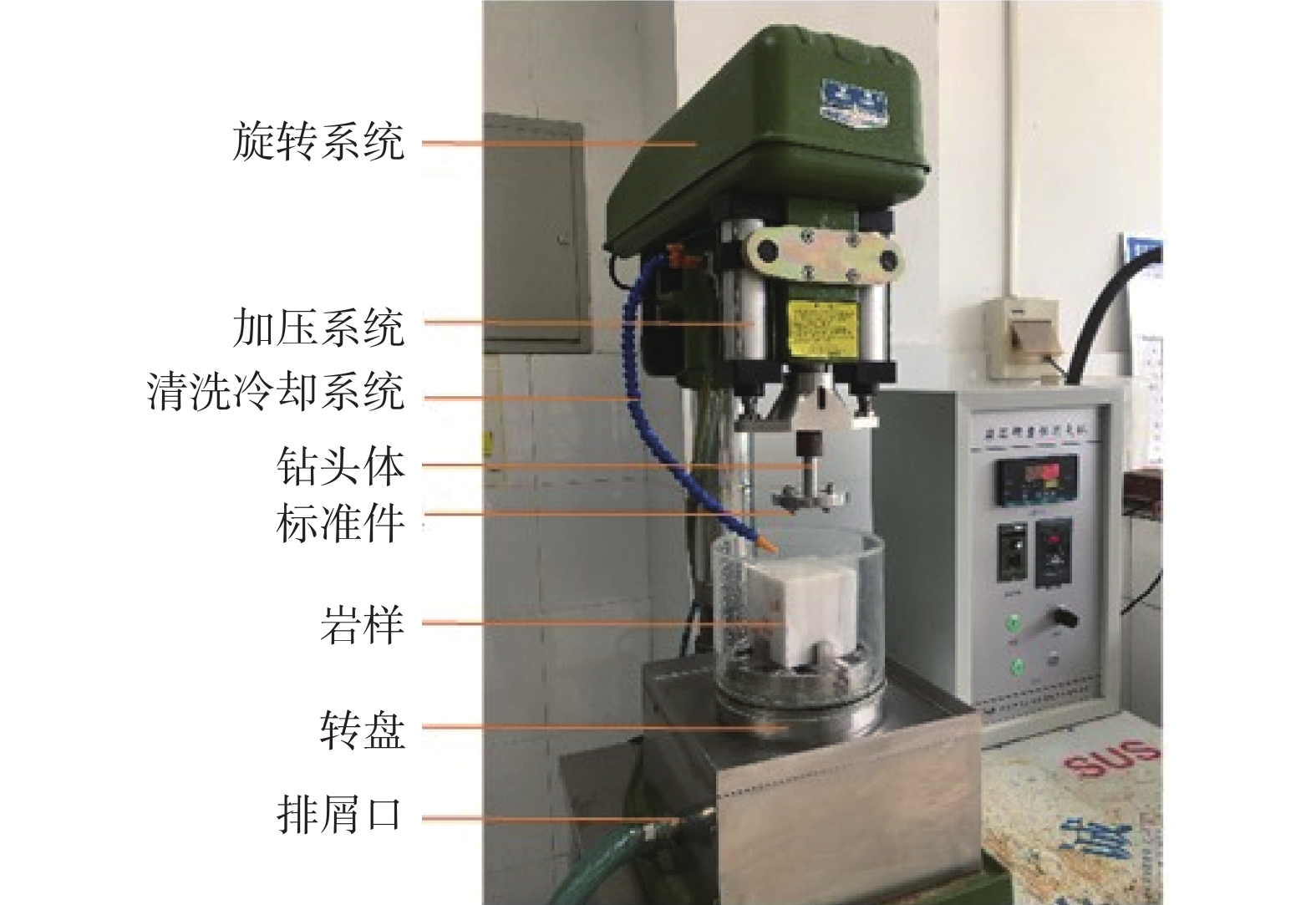
 下载:
下载:
